Unidad 2: De compras y la ropa
7. Agreguemos—el vocabulario sobre shopping (ir de compras) y clothing (la ropa)
Below is a review of some common expressions about the weather: el tiempo that you already know. These will be useful for when we discuss what types of clothes you may need based on the climate of a region.
¿Qué tiempo hace hoy?
Hoy hace …
- sol
- frío
- calor
- viento
Hoy está …
- nublado
- nevando
- lloviendo

Read the passage below and underline the words you recognize as cognates, those that you have learned and those you understand based on the context of the reading. After you will answer questions based on this brief reading and your review of the weather expressions.
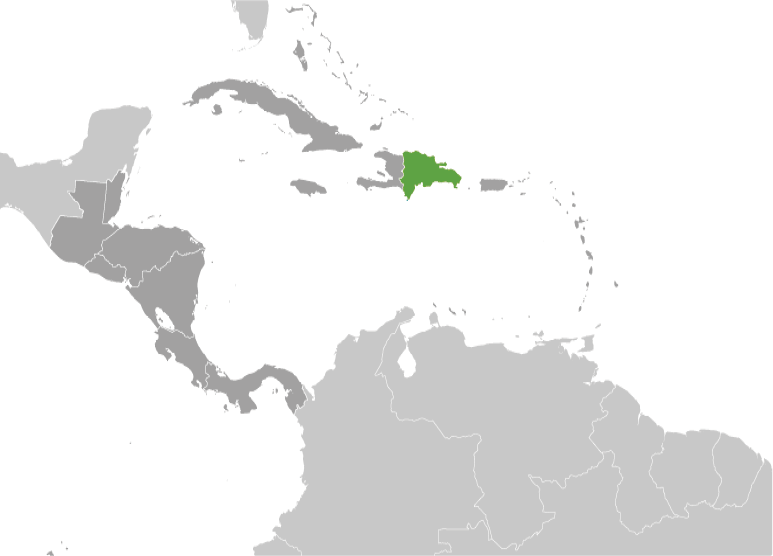
Oscar de la Renta nació el veintidós de julio de mil novecientos treinta y dos. Él es de la República Dominicana, el país que comparte una isla con Haití. Cuando tenía dieciocho años, salió de la República Dominicana para Madrid. Estudió arte y pintura. La moda era interesante y fascinante para él. Decidió estudiar la moda. Su ropa ha inspirado a muchas personas por todo el mundo. A algunas mujeres famosas como las esposas de unos presidentes, les gustan sus diseños. Su ropa no es solamente para la gente rica. Unas tiendas como Macy’s y Saks tienen la ropa de Oscar de la Renta también.[1]

Comprendemos: Contesta las preguntas de la lectura con oraciones completas.
1. Escribe el día de su nacimiento (birth date) en números. (Recuerda el orden es día/mes/ año).
_________________________________________
2. ¿Es Oscar de la Renta de España?
_________________________________________
3. ¿Es su ropa solamente para los ricos?
_________________________________________
4. ¿A quién le gusta su ropa?
_________________________________________
5. ¿Cuáles países comparten (share) una isla?
_________________________________________
6. En las islas del Caribe ¿qué tiempo hace?
_________________________________________
7. ¿Crees que en la República Dominicana hace sol muchos días?
_________________________________________
8. ¿Crees que en Haití hace tanto frío como en Rochester?
_________________________________________
9. ¿Hoy cómo está el tiempo en Rochester?
_________________________________________
10. Cuando hay muchas nubes en el cielo, ¿cómo decimos?
_________________________________________
a) Aprendamos el vocabulario relacionado a la moda y a la ropa.
We are fortunate today to have many resources from which to learn about culture. Designers from all over the world have multiple platforms from which to sell their clothing and often times one may knowingly or unknowingly have clothing from around the world in one’s closet. Sometimes patterns and colors together with the style of the clothing give us a glimpse into the norms in other societies. Examples of this are labels as Zara, Mango, Blanco, etc. As we begin this unit, you will learn basic terms for clothing. Later in the unit, you will gain exposure to various traditional outfits from Spanish speaking countries. As in the English speaking world, Spanish vocabulary will have some country specifics. The more exposure you gain to the culture of each region, the more you will learn these differences.
In the following page you will find a list of vocabulary for you to learn. We selected the more common words in the Spanish speaking world, but keep in mind the differences that you will find. Remember to print the vocabulary list from the online platform and bring it to each class. You should consider creating flashcards for words or expressions that you find difficult. Your flashcards may be English to Spanish or a picture on one side and Spanish on the other. Review the following list and identify the items necessary based on the weather descriptions to the right of the list.
La ropa
| Español | Inglés |
|---|---|
| el abrigo | overcoat |
| la bata | robe |
| la blusa | blouse |
| el bolso / la bolsa | purse |
| las botas (pl.) | boots |
| la bufanda | scarf |
| los calcetines (pl.) | socks |
| la camisa | shirt |
| la camiseta | t-shirt |
| la chaqueta | jacket |
| las chanclas | sandals |
| el cinturón | belt |
| el conjunto | outfit |
| la corbata | tie |
| la falda | skirt |
| la gorra | cap |
| los guantes (pl.) | gloves |
| el impermeable | raincoat |
| los jeans (pl.) | jeans |
| las medias (pl.) | stockings; hose |
| la moda | fashion |
| los pantalones (pl.) | pants |
| los pantalones cortos | shorts |
| el paraguas (singular) | umbrella |
| el pijama | pajamas |
| las prendas | articles of clothing |
| la ropa interior | underwear |
| las sandalias* (pl.) | sandals |
| el sombrero | hat |
| la sudadera | sweatshirt |
| el suéter | sweater |
| los tenis (pl.) | tennis shoes |
| el traje | suit |
| el traje de baño | swimsuit; bathing suit |
| el vestido | dress |
| las zapatillas (pl.) | slippers |
| los zapatos (pl.) | shoes |
 ¿Qué me pongo cuando hace sol y hace mucho calor?
¿Qué me pongo cuando hace sol y hace mucho calor?
- ________________________________
- ________________________________
- ________________________________
¿Qué me pongo cuando hace frío y está nevando?
- ________________________________
- ________________________________
- ________________________________
¿Qué me pongo cuando hace viento y está lloviendo en primavera?
- ________________________________
- ________________________________
- ________________________________
¿Qué me pongo cuando quiero salir con mis amigos?
- ________________________________
- ________________________________
- ________________________________
Piensa en lo que necesitas cuando regreses a la universidad en agosto o septiembre. ¿Qué ropa vas a preparar para el semestre del otoño? ______________________________________
Cuando regresas a casa en las vacaciones de diciembre, ¿qué ropa escoges para traer a la universidad para el semestre en el invierno? ___________________________________________________________________________________________
b) La cultura atrás del significado de las palabras:
As we commented before, some words have a different meaning depending on which Spanish-speaking country you are in and even within some regions in the same country. Let’s analyze some of these changes in our vocabulary list. One word that everybody recognizes is jeans. You will find that in Spain the word “tejanos”, los pantalones tejanos or los vaqueros are other terms used for jeans. This is a result of when these clothes came to Spain by people from Texas. They recognize “jeans” as “TEJANOS” for that reason. Notice that they write the word with “J” and not with “X” as we spell Texas in English.
As you remember, the use of the “J” instead of “X” is common in Spain. It is the reason why we see in several books “Méjico” for the country Mexico. For Mexicans, it is very important to write the name of their country with “X” for historical reasons. The pre-hispanic culture (cultura pre-hispánica: the culture that lived in América before Spain “hispanic” discovered the Americas) is the region, where México is today. This was known as the Mexicas and also known as Aztecs. In memory of their ancestors Mexicans like to write México with “X”, but the phonetic still sounds like a “J”.
Los jeans o tejanos, en diferentes países de América son conocidos como “vaqueros” (cowboys). As you can imagine the name came from the cowboys who were the famous Westerners that swept across the continent.
Obviously los jeans, los tejanos o vaqueros, are not the only words that have a history. Las sandalias for example are known as chanclas, chancletas, playeras, alpargatas, zapatillas, chinelas, babuchas, o guaraches. If we look for the definition of “culture” we would find: “ it is the sum total of ways of living built up by a group of human beings and handed down from one generation to another. It is the artistic and intellectual activities and products as a result of the human activity(1).” Language is the expression of the culture; to speak a language we need to know the culture that the language expresses! WordReference Random House Learner’s Dictionary of American English © 2015
De regreso a la moda:
Cuando tienes que describir a alguien que no conoces, a veces puedes señalar a esta persona por una descripción de lo que se lleva. Los adjetivos ayudan a describir no solamente a la persona sino también lo que se lleva puesta. Los adjetivos pueden ser los colores, las telas o patrones en la ropa.
Adjetivos para usar con la ropa
| Español | Inglés |
|---|---|
| el algodón | cotton |
| el cuero | leather |
| la lana | wool |
| el poliéster | polyester |
| la seda | silk |
| la tela | fabric |
| ancho/a | wide |
| atrevido/a | daring |
| claro/a | light (colored) |
| cómodo/a | comfortable |
| corto/a | short |
| oscuro/a | dark |
| el tamaño | size (in general) |
| el número | number –size for shoes |

Describe la ropa con adjetivos e indica si te gusta o no te gusta la prenda. No olvides la importancia de que los adjetivos deben concordar en género (femenino, masculino) y número (singular, plural) con la prenda que describes. Sigue el ejemplo.
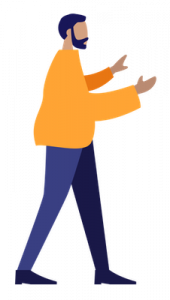
1. El hombre lleva una chaqueta anaranjada de poliéster. Me gusta porque es elegante.
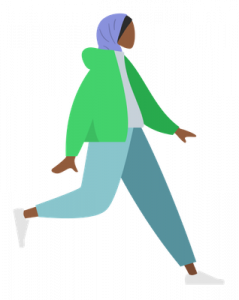
2._______________________________________________________________________________________________________________________________
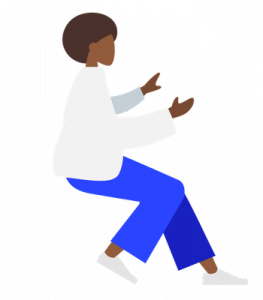
3.___________________________________________________________________________________________________________________________
Lee el siguiente diálogo, se trata de ir de compras.
 DEPENDIENTE: ¿Puedo ayudarlo?
DEPENDIENTE: ¿Puedo ayudarlo?
CLIENTE: No, gracias… sólo estoy mirando.
De hecho, ¿tienen este suéter en otros colores?
DEP: ¡Sí! Lo tenemos en azul, verde y blanco.
CL: ¿Me trae uno en azul por favor?
DEP: En seguida ¿Qué talla quiere?
CL: Doble X
El dependiente trae el suéter.
CL: ¿Me lo puedo probar?
DEP: ¡Por supuesto! El probador está por aquí.
El hombre va al probador y sale con el suéter puesto.
DEP: ¿Qué tal le queda?
CL: Me aprieta un poco ¿tienen una talla más grande?
El dependiente le da otro suéter.
CL: ¡Muy bien! Me lo llevo.
DEP: Vale. Pague en la caja… le acompaño.
Llegan a la caja.
DEP: ¿Le gustaría pagar con tarjeta de crédito o en efectivo, Señor?
CL: En efectivo. Perdón, pero sólo tengo un billete de 500 euros ¿Está bien?
DEP: Ningún problema. Aquí está su cambio y el ticket, tiene un mes para devolverlo si quiere un reembolso.
CL: Gracias

A continuación vamos a repasar los cognados y usemos la estrategia de “adivinar”, no utilices un diccionario, ni un traductor. ¡Adivinemos en el diálogo!
- ¿Qué significa “tarjeta de crédito”? __________________________________________
- ¿Qué significa “probar” y entonces “probador” _______________ y _________________
- La expresión “por supuesto,” ¿qué significa? ___________________________________
- ¿Qué piensas que significa la expresión “Vale”?_________________________________
- Piensa en el progreso natural de una conversación de compras. En el fin del diálogo la dependiente dice “Aquí está su cambio y el ticket, tiene un mes para devolverlo si quiere un reembolso”. ¡Adivina! ¿Qué está diciendo la dependiente? _______________________________________________________________________________________________________
Juguemos en clase, be prepared! Let’s play “Guess Who?” ¿Adivina quién es?

Look at the photos on the slides on the online platform (notes 2.2.2) and create in Spanish, 10 questions that may be answered with either “sí” or “no.” Your questions will be used to play the game in class to see if you and your partner can guess who each is describing. Examples are below of the types of “sí or no” questions you may create.
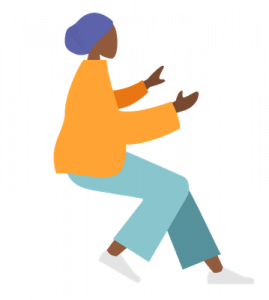
1. ¿Es una mujer? For this example, assume that your partner said “sí”
2. ¿Lleva la mujer un vestido oscuro? (Notice, the adjective placement) a “no”
3. ¿ la mujer usa una gorra azul? (Notice, the adjective placement) a “sí”
Make your questions specific with adjectives but make sure they are yes/no questions. If you don’t come prepared to class, you will be not able to participate.
- Adaptado de ¹ http://www.biography.com/people/oscar-de-la-renta-9270239#synopsis accessed March 17, 2015. ↵








